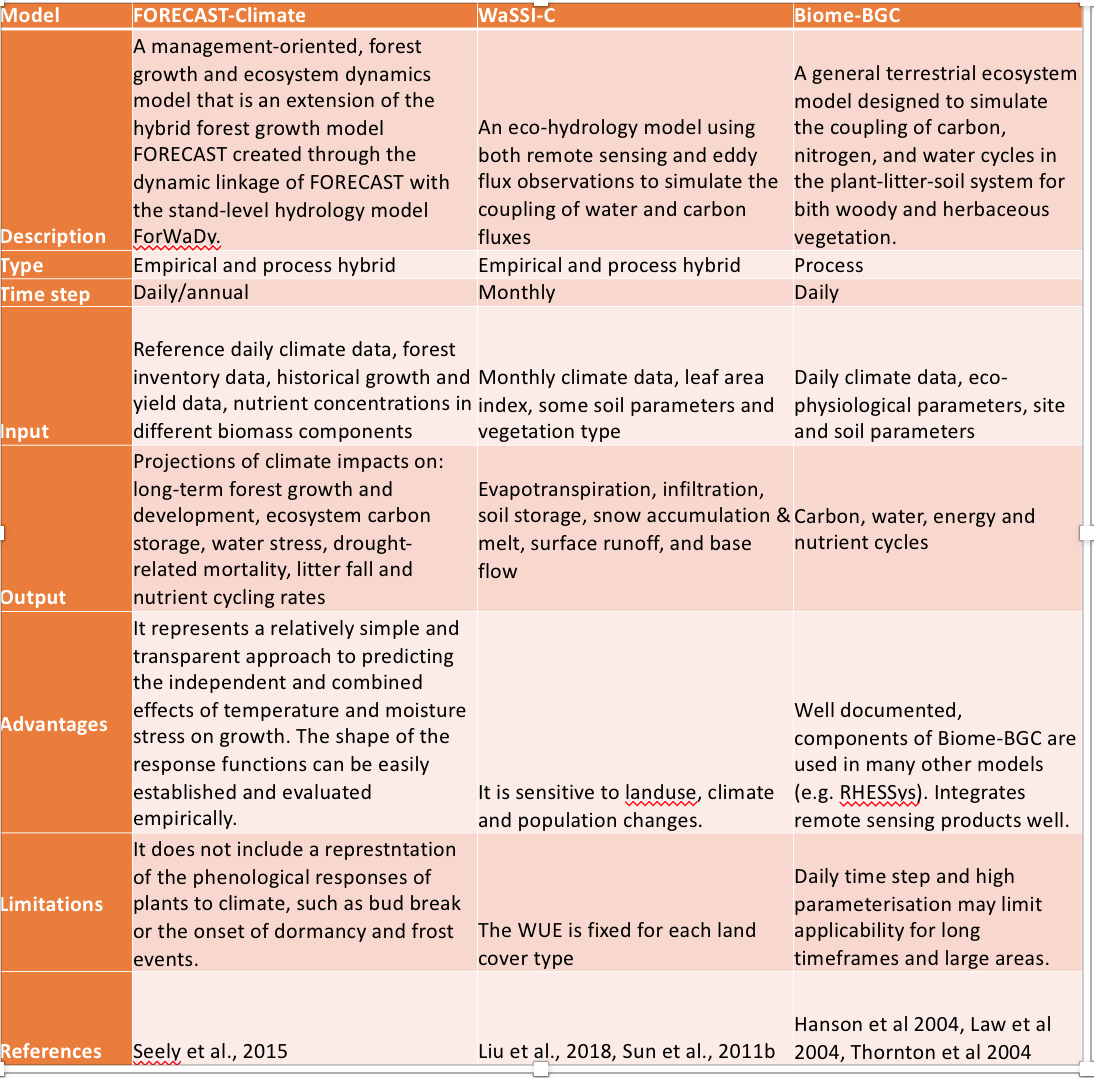Several models have been compared including statistical model (Ritenberga et al., 2018) and some process-based hybrid models, like FORECAST-Climate (Kang et al., 2017; Seely et al., 2015b), WaSSI-C (Liu et al., 2018; Sun et al., 2011), BIOME-BGC (Hidy et al., 2016; Nunes et al., 2015; Raj et al., 2018), 3PG (Rodriguez-Suarez et al., 2010; Williams et al., 2001), CANOAK (Hanson et al., 2004a). Statistical model can predict climate change impacts with relatively small data requirement but it limits insight with respect to the underlying mechanisms of response and if the range of variation in the future climate exceeds the historical climate regime, then applications of the model are beyond the scope of its statistical foundation. Process-based hybrid models are becoming increasingly common on forest carbon and water coupling. They represent relatively transparent approaches to predicting the independent and combined effects of climate factors and moisture stress on growth. Furthermore, the shape of the response functions can be easily established and evaluated empirically.
The purposes of the model should be 1) able to present the effects of climate change on forest productivity and drought related-mortality. 2) Able to simulate forest management in order to get the adaptive management strategies. 3) Easy to calibrate.
Here, three models will be shown for detail comparison.
Enlarge

Some Model Links:
Reference
1.Hanson, P.J. et al., 2004. Oak forest carbon and water simulations: Model intercomparisons and evaluations against independent data. Ecological Monographs, 74(3): 443-489.
2.Kang, H. et al., 2017. Simulating the impact of climate change on the growth of Chinese fir plantations in Fujian province, China. New Zealand Journal of Forestry Science, 47(1).
3.Law, B.E., Sun, O.J., Campbell, J., Van Tuyl, S. and Thornton, P.E., 2003. Changes in carbon storage and fluxes in a chronosequence of ponderosa pine. Global Change Biology, 9(4): 510-524.
4.Liu, N. et al., 2018. Parallelization of a distributed ecohydrological model. Environ Modell Softw, 101: 51-63.
5.Seely, B., Welham, C. and Scoullar, K., 2015. Application of a Hybrid Forest Growth Model to Evaluate Climate Change Impacts on Productivity, Nutrient Cycling and Mortality in a Montane Forest Ecosystem. PLoS One, 10(8): e0135034.
6.Sun, G. et al., 2011. Upscaling key ecosystem functions across the conterminous United States by a water-centric ecosystem model. Journal of Geophysical Research, 116.
7.Wang, Y., Al-Saaidi, H.A.I., Kong, M. and Alvarado, J.L., 2018. Thermophysical performance of graphene based aqueous nanofluids. Int J Heat Mass Tran, 119: 408-417.
 Follow
Follow